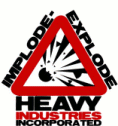

Relevant:
2012-08-19 — nytimes.com
Take the cavernous solar-panel factory run by Flextronics in Milpitas, south of San Francisco. A large banner proudly proclaims "Bringing Jobs & Manufacturing Back to California!" (Right now China makes a large share of the solar panels used in this country and is automating its own industry.)
Yet in the state-of-the-art plant, where the assembly line runs 24 hours a day, seven days a week, there are robots everywhere and few human workers. All of the heavy lifting and almost all of the precise work is done by robots that string together solar cells and seal them under glass. The human workers do things like trimming excess material, threading wires and screwing a handful of fasteners into a simple frame for each panel.
Such advances in manufacturing are also beginning to transform other sectors that employ millions of workers around the world. One is distribution, where robots that zoom at the speed of the world's fastest sprinters can store, retrieve and pack goods for shipment far more efficiently than people. Robots could soon replace workers at companies like C & S Wholesale Grocers, the nation's largest grocery distributor, which has already deployed robot technology.
Rapid improvement in vision and touch technologies is putting a wide array of manual jobs within the abilities of robots. For example, Boeing's wide-body commercial jets are now riveted automatically by giant machines that move rapidly and precisely over the skin of the planes. Even with these machines, the company said it struggles to find enough workers to make its new 787 aircraft. Rather, the machines offer significant increases in precision and are safer for workers.
...
Witness the factory of Tesla Motors, which recently began manufacturing the Tesla S, a luxury sedan, in Fremont, Calif., on the edge of Silicon Valley... Its fast-moving robots, bright Tesla red, each has a single arm with multiple joints. Most of them are imposing, 8 to 10 feet tall, giving them a slightly menacing "Terminator" quality.
But the arms seem eerily human when they reach over to a stand and change their "hand" to perform a different task. While the many robots in auto factories typically perform only one function, in the new Tesla factory a robot might do up to four: welding, riveting, bonding and installing a component.
As many as eight robots perform a ballet around each vehicle as it stops at each station along the line for just five minutes. Ultimately as many as 83 cars a day -- roughly 20,000 are planned for the first year -- will be produced at the factory. When the company adds a sport utility vehicle next year, it will be built on the same assembly line, once the robots are reprogrammed.
Tesla's factory is tiny but represents a significant bet on flexible robots, one that could be a model for the industry. And others are already thinking bigger.
source article |
permalink |
discuss |
subscribe by:
![]() |
|
![]() RSS |
email
RSS |
email 
Comments: Be the first to add a comment
add a comment | go to forum thread
Note: Comments may take a few minutes to show up on this page. If you go to the forum thread, however, you can see them immediately.